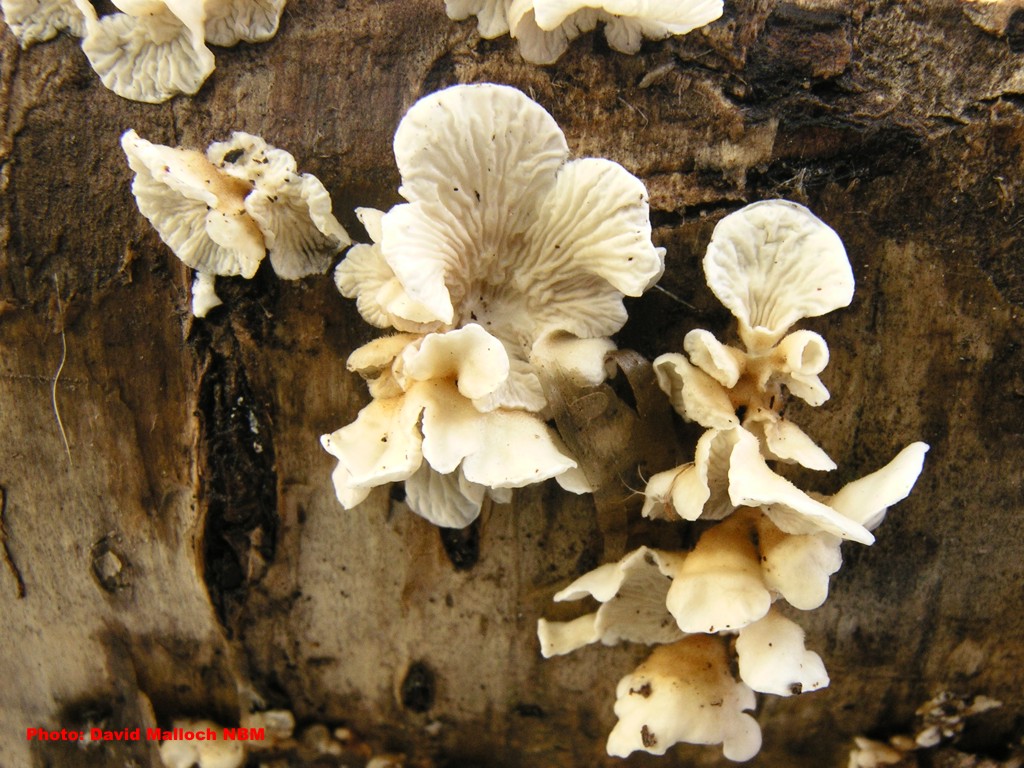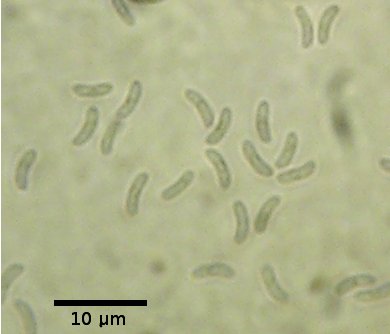Fleshy Fungi of New Brunswick >>
Plicaturopsis crispa
A Focus on Species >>
Plicaturopsis crispa
Winter Basidiomycota >>
Plicaturopsis crispa
Plicaturopsis crispa (Pers.) D.A. Reid

Plicaturopsis crispa is one of the most abundant of our winter fungi. It becomes established on fairly recently dead branches and logs and produces abundant basidiomata, often in large clusters. In our region it is found most commonly on birch, but may also be encountered on other species including rare appearances on conifers. It is a truly functional winter fungus. Basidiomata brought indoors, moistened and left in a humid container will produce a heavy spore print throughout the winter.

The most diagnostic feature of P. crispa is the folded hymenophore (spore-bearing surface). Although related to the gilled mushrooms it never produces distinct gills as they do. The spores are strongly amyloid and will turn blue-black in Melzer's Solution. Under the microscope the spores are seen to be allantoid (sausage-shaped), smooth-walled and very small. The picture at left was taken of spores mounted in Melzer's Solution. Because of their small size and thin walls, the amyloid reaction of the spores is not easy to make out, but it can be seen very clearly if a drop of Melzer's solution is placed directly on the spore print.